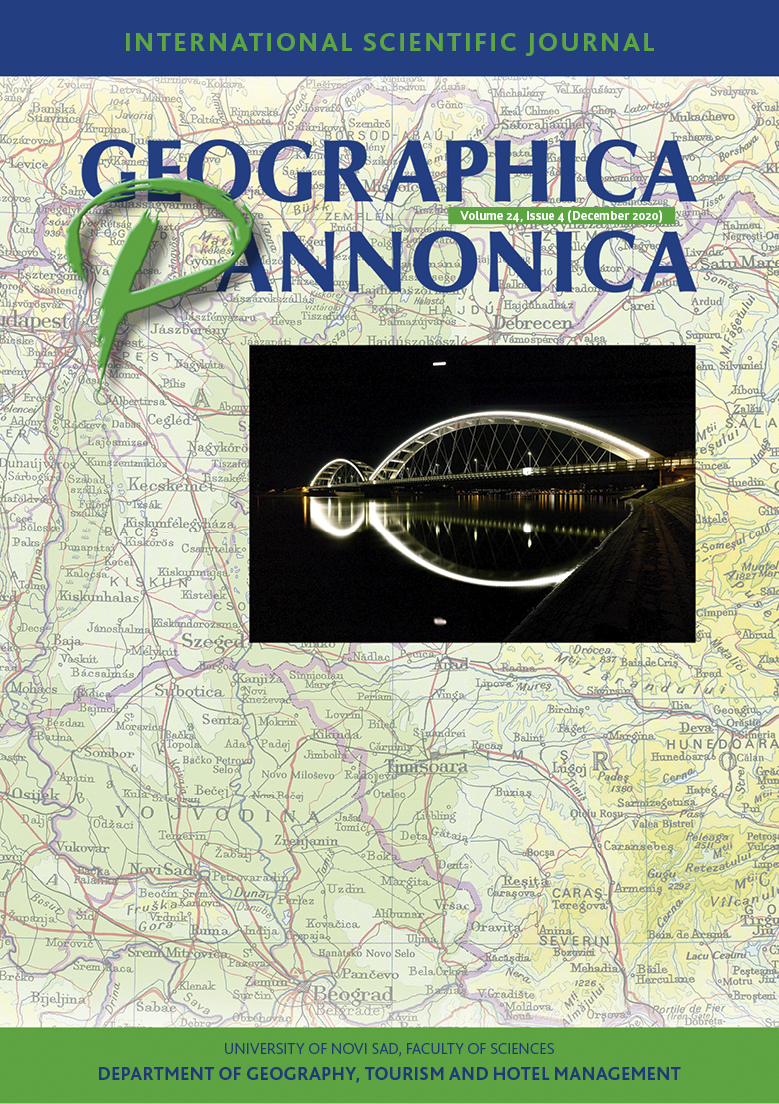The use of Geocoding for Home Healthcare Application and Management an Epidemic Situation. Case of COVID-19 Virus Outbreak
Abstract
The lack of an addressing system is one of the problems of urban management in Algeria, which makes it hard to find the addresses concerned, especially in case of crisis where the decision-makers need accurate data in real-time. Like many countries, Algeria follows up the world health organization guidelines that declared the COVID-19 virus as pandemic and recommended the full quarantine and reduces the social contact as much as possible; however, these procedures weren’t enough to control the increasing number of confirmed cases, which exceeded the hospital’s capacities. To face up the outbreak of this pandemic, the Algerian health professionals decided to treat most coronavirus cases at home. This study aims to use a geocoding tool developed in C# programming language and ArcGIS Software Development Kit (SDK) to help in the epidemiological control operation in Ain Touta city and simplifies the interventions using a spatial approach. These problems are addressed by a tool to collect, analyze, store, and process archiving of the geographic data using a geodatabase server
References
Bonner, M. R., Han, D., Nie, J., Rogerson, P., Vena, J. E., & Freudenheim, J. L. (2003). Positional accuracy of geocoded addresses in epidemiologic research. Epidemiology, 14(4), 408–412.
Cayo, M. R., & Talbot, T. O. (2003). Positional error in automated geocoding of residential addresses. International journal of health geographics, 2(1), 10.
Davis, C. A., & Fonseca, F. T. (2007). Assessing the certainty of locations produced by an address geocoding system. Geoinformatica, 11(1), 103–129.
Dearwent, S. M., Jacobs, R. R., & Halbert, J. B. (2001). Locational uncertainty in georeferencing public health datasets. Journal of Exposure Science & Environmental Epidemiology, 11(4), 329–334.
Edwards, S. E., Strauss, B., & Miranda, M. L. (2014). Geocoding Large Population-level Administrative Datasets at Highly Resolved Spatial Scales. Transactions in GIS, 18(4), 586–603.
Karimi, H. A., Durcik, M., & Rasdorf, W. (2004). Evaluation of uncertainties associated with geocoding techniques. Computer-Aided Civil and Infrastructure Engineering, 19(3), 170–185.
Krieger, N., Chen, J. T., Waterman, P. D., Soobader, M.-J., Subramanian, S., & Carson, R. (2002). Geocoding and monitoring of US socioeconomic inequalities in mortality and cancer incidence: does the choice of area-based measure and geographic level matter? the Public Health Disparities Geocoding Project. American journal of epidemiology, 156(5), 471–482.
La Direction Technique Chargée des Statistiques Régionales, l’Agriculture et de la C. (2008). Collections Statistiques n° 163/2011 Série S : Statistiques Sociales Armature urbaine - RGPH 2008 -. Office National des Statistiques. http://www.ons.dz/IMG/pdf/armature_urbaine_2008.pdf
Lahmar, B., Dridi, H., & Akakba, A. (2020). Territorial health approach outputs of geo-governance of health facilities: case study of Batna, Algeria. GeoJournal, 1–15. https://doi.org/10.1007/s10708-020-10189-1
Longley, P. A., Goodchild, M. F., Maguire, D. J., & Rhind, D. W. (2005). Geographic information systems and science. John Wiley & Sons.
Mazumdar, S., Rushton, G., Smith, B. J., Zimmerman, D. L., & Donham, K. J. (2008). Geocoding accuracy and the recovery of relationships between environmental exposures and health. International Journal of Health Geographics, 7(1), 13.
Oliver, M. N., Matthews, K. A., Siadaty, M., Hauck, F. R., & Pickle, L. W. (2005). Geographic bias related to geocoding in epidemiologic studies. International Journal of Health Geographics, 4(1), 29.
Präger, M., Kurz, C., Böhm, J., Laxy, M., & Maier, W. (2019). Using data from online geocoding services for the assessment of environmental obesogenic factors: a feasibility study. International journal of health geographics, 18(1), 13.
Ratcliffe, J. H. (2001). On the accuracy of TIGER-type geocoded address data in relation to cadastral and census areal units. International Journal of Geographical Information Science, 15(5), 473–485.
Ratcliffe, J. H. (2004). Geocoding crime and a first estimate of a minimum acceptable hit rate. International Journal of Geographical Information Science, 18(1), 61–72.
Roongpiboonsopit, D., & Karimi, H. A. (2010). Comparative evaluation and analysis of online geocoding services. International Journal of Geographical Information Science, 24(7), 1081–1100.
Ward, M. H., Nuckols, J. R., Giglierano, J., Bonner, M. R., Wolter, C., Airola, M., et al. (2005). Positional accuracy of two methods of geocoding. Epidemiology, 16(4), 542–547.
Whitsel, E. A., Quibrera, P. M., Smith, R. L., Catellier, D. J., Liao, D., Henley, A. C., & Heiss, G. (2006). Accuracy of commercial geocoding: assessment and implications. Epidemiologic Perspectives & Innovations, 3(1), 8.
Whitsel, E. A., Rose, K. M., Wood, J. L., Henley, A. C., Liao, D., & Heiss, G. (2004). Accuracy and repeatability of commercial geocoding. American journal of epidemiology, 160(10), 1023–1029.
Yang, D.-H., Bilaver, L. M., Hayes, O., & Goerge, R. (2004). Improving geocoding practices: evaluation of geocoding tools. Journal of medical systems, 28(4), 361–370.
Zandbergen, P. A. (2007). Influence of geocoding quality on environmental exposure assessment of children living near high traffic roads. BMC public health, 7(1), 37.
Zandbergen, P. A. (2014). Ensuring confidentiality of geocoded health data: Assessing geographic masking strategies for individual-level data. Advances in medicine, 2014.

